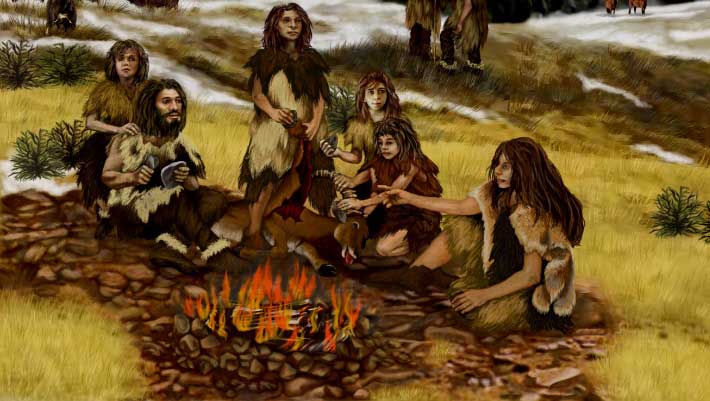Archaeologists have discovered and analyzed three hearths at the Upper Paleolithic site (45,000 to 10,000 years ago) of Korman’ 9 on the right bank of the Dniester River in Ukraine. Their findings show that Ice Age humans built different types of hearths and used mainly wood, but possibly also bones and fat, to fuel their fires.
It is widely assumed that a key tool for human survival, particularly during cold periods, is the ability to create, maintain and use fire.
A large body of literature has provided data on the benefits of fire use on hominin evolution and its fundamental function in everyday life.
More recent studies have also shown the labor-intensive nature of using pyrotechnology; meaning fire use is not only an essential survival tool but also played a key role in how hunter-gatherer populations organize themselves.
This includes: how hunter-gatherers acquire resources like wooden fuels, if they stored or cached fuel materials for future use, how they started and maintained fires, or how sites and activities are organized around combustion features.
“Fire was not just about keeping warm; it was also essential for cooking, making tools and for social gatherings,” said Dr. Philip R. Nigst, an archaeologist at the University of Vienna.
“We know that fire was widespread before and after this period, but there is little evidence from the height of the Ice Age,” added Dr. William Murphree, an archaeologist at the University of Algarve.
In the current study, the researchers focused on the archaeological site of Korman’ 9 in Ukraine.
“Korman’ 9 is an Upper Paleolithic site located on a northern facing terrace on the right bank of the Dniester River in Ukraine,” they said.
“The site was found in 2012 during a survey of sites along the Dniester River.”
Through microstratigraphic analysis, micromorphology and colorimetric analysis, the scientists identified three flat, wood-fired hearths.
One interesting finding from this was that these…
Read the full article here

